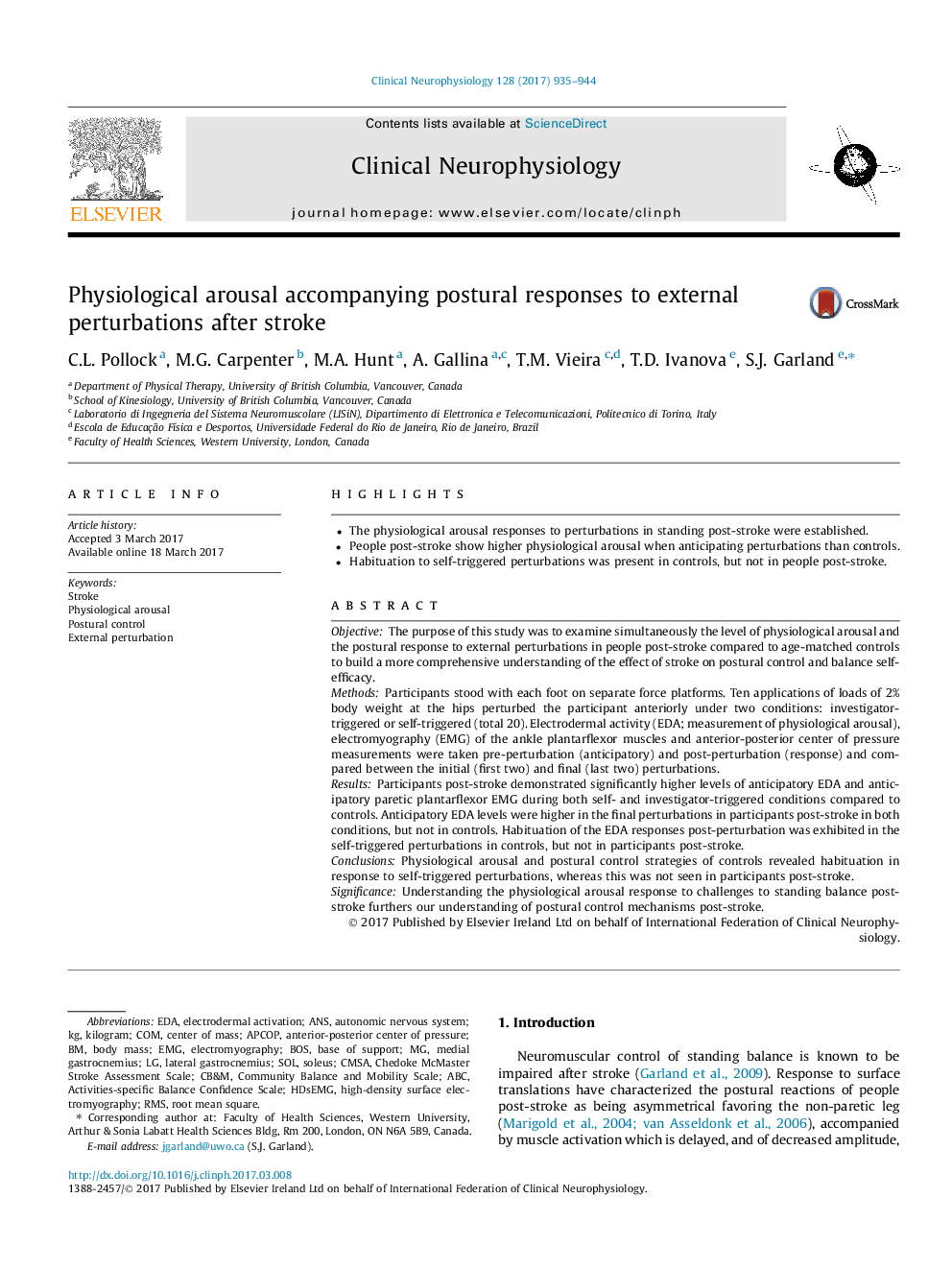| کد مقاله | کد نشریه | سال انتشار | مقاله انگلیسی | نسخه تمام متن |
|---|---|---|---|---|
| 5627912 | 1406358 | 2017 | 10 صفحه PDF | دانلود رایگان |
- The physiological arousal responses to perturbations in standing post-stroke were established.
- People post-stroke show higher physiological arousal when anticipating perturbations than controls.
- Habituation to self-triggered perturbations was present in controls, but not in people post-stroke.
ObjectiveThe purpose of this study was to examine simultaneously the level of physiological arousal and the postural response to external perturbations in people post-stroke compared to age-matched controls to build a more comprehensive understanding of the effect of stroke on postural control and balance self-efficacy.MethodsParticipants stood with each foot on separate force platforms. Ten applications of loads of 2% body weight at the hips perturbed the participant anteriorly under two conditions: investigator-triggered or self-triggered (total 20). Electrodermal activity (EDA; measurement of physiological arousal), electromyography (EMG) of the ankle plantarflexor muscles and anterior-posterior center of pressure measurements were taken pre-perturbation (anticipatory) and post-perturbation (response) and compared between the initial (first two) and final (last two) perturbations.ResultsParticipants post-stroke demonstrated significantly higher levels of anticipatory EDA and anticipatory paretic plantarflexor EMG during both self- and investigator-triggered conditions compared to controls. Anticipatory EDA levels were higher in the final perturbations in participants post-stroke in both conditions, but not in controls. Habituation of the EDA responses post-perturbation was exhibited in the self-triggered perturbations in controls, but not in participants post-stroke.ConclusionsPhysiological arousal and postural control strategies of controls revealed habituation in response to self-triggered perturbations, whereas this was not seen in participants post-stroke.SignificanceUnderstanding the physiological arousal response to challenges to standing balance post-stroke furthers our understanding of postural control mechanisms post-stroke.
Journal: Clinical Neurophysiology - Volume 128, Issue 6, June 2017, Pages 935-944
